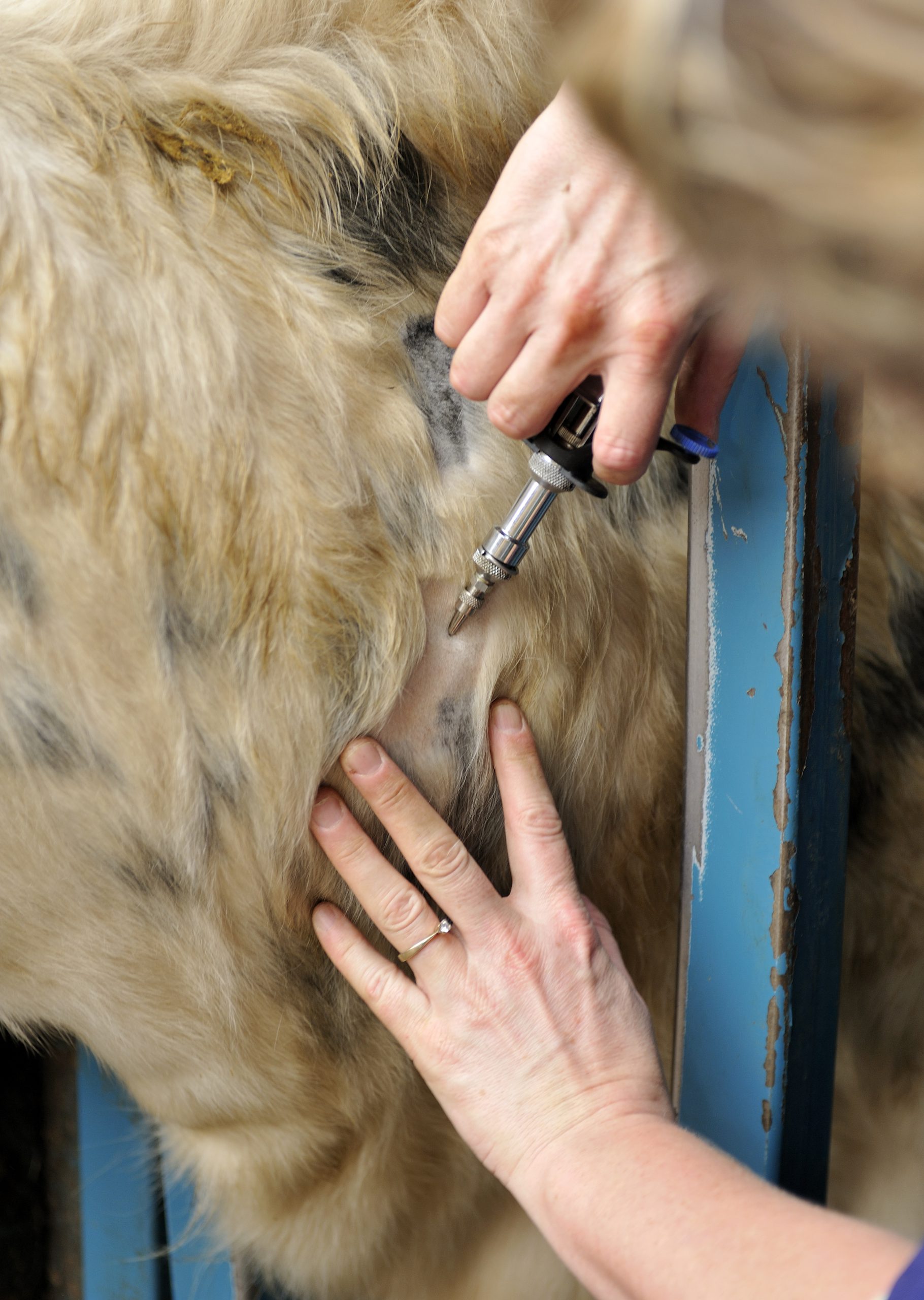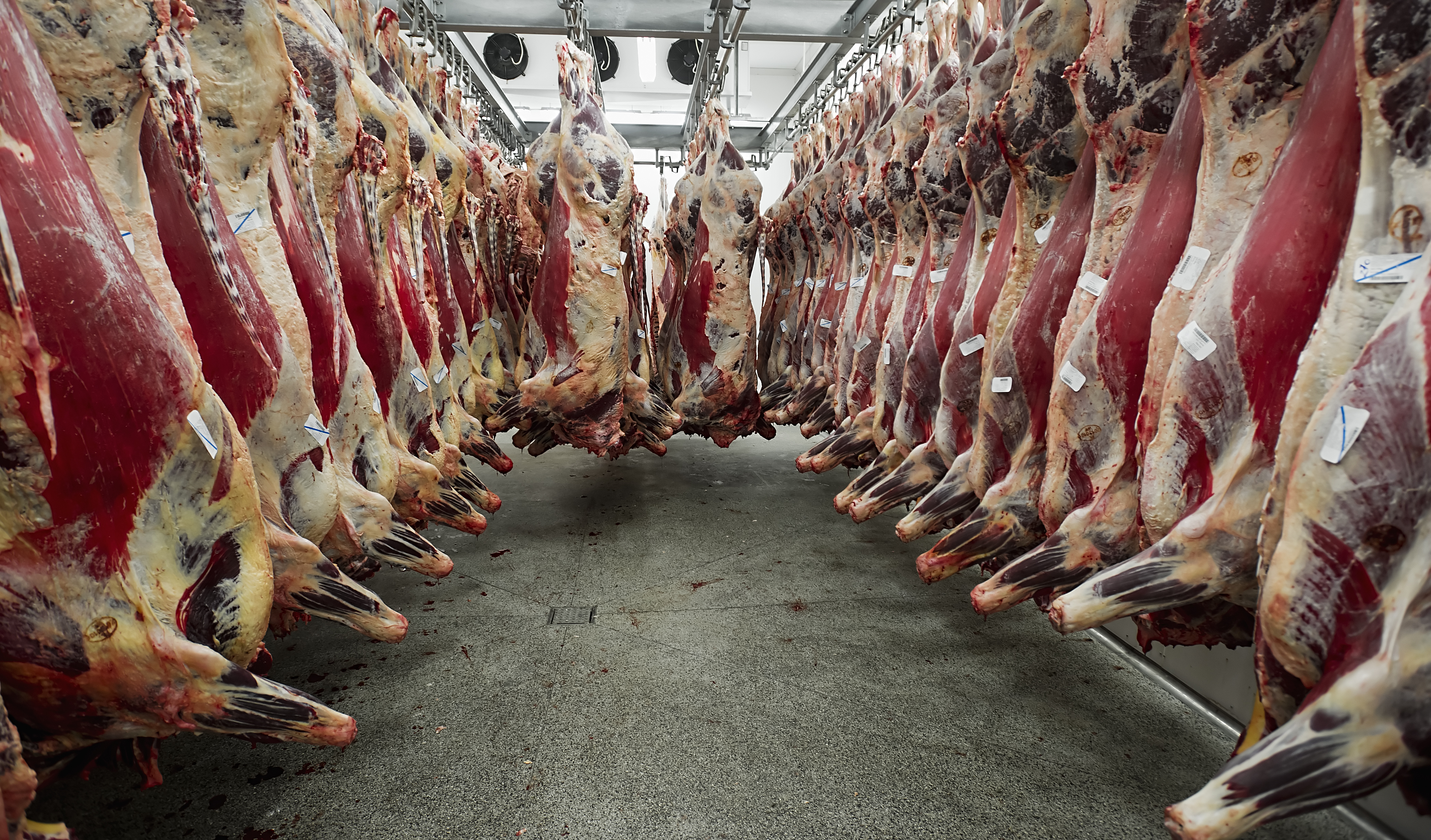Farmers whose cattle herds are suffering a TB breakdown often say; “but my reactor animal had no visible lesions of TB at slaughter, so surely that means it wasn’t infected”.
This is one of the most common misconceptions about bovine TB. The comparative format of the tuberculin skin test used in the UK is very specific (99.98% at the standard interpretation), so the probability of a false positive result is roughly 1 in 5,000 to 6,000 uninfected cattle tested. This means we can be confident that the vast majority of skin test-positive cattle (i.e. test reactors) are truly infected with TB irrespective of the post-mortem and laboratory findings.
The interferon-gamma blood test (gamma test for short) is less specific than the skin test (96.5%), so although the false positive rate is higher (about 3.5%), we can still be confident that the majority of test-positive animals are truly infected with TB. Additionally, the test is only routinely used in TB breakdown situations where we know M. bovis infection is present in the tested herd, therefore minimising the risk of removing uninfected animals.

Logically we know that the vast majority of skin and gamma test-positive animals are truly infected with M. bovis, but when it comes to post mortem inspection, we only find visible lesions (VL) consistent with TB infection in a proportion of these animals. In England in 2019, approximately 36% of animals removed as standard interpretation skin test reactors in the Edge and High Risk Areas showed visible lesions at slaughter. This percentage is lower for gamma test positive animals, which display VL at slaughter in between 5% (new breakdown herds) and 15% (persistently infected herds) of cases.

This is seen by some as a failure of the diagnostic tests for bovine TB, when in fact it is to do with the usually slow progression of infection and the limitations of post mortem inspection in a commercial slaughterhouse setting for assessing the true infection status of an animal. In the case of the gamma test, it is also to do with the fact that the test can identify animals earlier in the course of infection, therefore visible lesions are less likely to have developed in the animal.
Post mortem meat inspection
All cattle intended for human consumption, whether sent for commercial slaughter by the owner or removed for TB control purposes by the Animal & Plant Health Agency (APHA), undergo ante- and post-mortem meat inspection. This is carried out at the slaughterhouse by official veterinarians and meat inspectors of the Food Standards Agency to check, among other things, for evidence of TB.
Reactor animals and direct contacts (DCs) that have been removed from TB-restricted farms undergo a slightly more detailed post mortem inspection than routinely slaughtered animals to look specifically for lesions suspicious of TB. However, there are still limitations with this type of inspection as it is performed in a commercial setting and, therefore, carcases simply cannot be examined to the level of detail required to detect very small lesions. The carcases of bTB test-positive or bTB suspect animals that are taken to an APHA laboratory are examined in more detail by a veterinary pathologist. Find out more about this process in APHA’s science blog.
Post mortem inspection of reactors/DCs at a slaughterhouse is a relatively quick procedure involving visual inspection and manual palpation of the major lymph nodes (glands) and internal organs. It does not involve a detailed post mortem examination of the carcase as would be performed by a vet on an animal that died suddenly on farm or on animals used for research purposes.
Summary
- The skin test is highly specific, which means that we can be confident that the vast majority of skin test reactors are truly infected with TB, irrespective of whether or not lesions typical of TB are found at slaughter.
- The gamma test is less specific than the skin test. However although the false positive rate is higher, we can still be confident that the majority of test-positive animals are truly infected with TB, regardless of whether visible lesions of TB are found at slaughter.
- Skin and gamma test reactors do not necessarily show lesions typical of TB at post mortem inspection. This is because post mortem inspection in a commercial slaughterhouse setting is relatively insensitive and skin/gamma reactors are often in the early stages of infection when TB lesions are too small to be seen by the naked eye.
